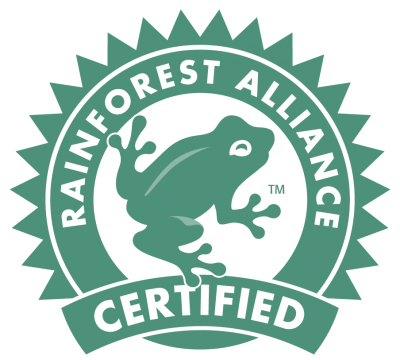Title Page
-
Site conducted
-
Group name
-
Conducted on
-
Prepared by
-
Name
-
Location
-
Appropriate Biosecurity measures are in place
-
Volunteer Registration form completed by volunteers
-
Safety briefing delivered to participants
Untitled Page
Risk assessment
-
Using swinging / punching tools hazard
- Yes
- No
- N/A
-
Risk level prior to mitigation
-
Mitigation • Ensure that suitable work boots, with reinforced toes, are being worn.
• Demonstrate and encourage simple warm up stretches before commencement and after breaks.
• Maintain safe working distance of at least 3 metres; for short handled tools (e.g. hammer), 2 metres.
• Explain and demonstrate how to use, carry and store tools correctly.
• Maintain tools in good condition.
• Establish a firm footing before swinging tools.
• Rotate tasks even if participants are not experiencing discomfort.
• Adjust the duration of work periods to take account of the physical capacities of the participants.
• Wear appropriate PPE e.g. hard hat, glasses and gloves. -
Risk level after mitigation
-
Proceed
-
Reason why work cannot commence
-
Bites and Stings hazard
-
Risk level prior to mitigation
-
Mitigation • Ensure that all participants are appropriately dressed
• e.g.: long sleeves and trousers, sturdy footwear, thick socks.
• Tuck trousers into socks, and wear gloves, when working in areas where there is a known, or suspected, higher risk of spider/insect bites.
• Provide insect repellent.
• Re-deploy to another task or location, any participants who have known allergies to bites or stings.
• Conduct a visual inspection of the worksite to identify and flag high risk areas e.g.: ant nests, stinging plants.
• Walk heavily in suspected snake habitat. -
Risk level after mitigation
-
Proceed
-
Reason why work cannot commence
-
Slips, Trips and Falls hazards
-
Risk level prior to mitigation
-
Mitigation:
• Avoid any obvious hazards such as slippery logs, loose rocks, steep embankments etc.
• Remove trip hazards from the worksite by filling holes, removing unnecessary objects etc.
• Flag, or cordon off, immovable trip hazards.
• Allow at least 2 metres ‘visibility space’ between participants when walking along tracks.
• Ensure that boots are firmly laced.
• Exercise additional caution when walking downhill, e.g. walk across the slope, and have a strong leader control walking speed.
• Avoid carrying heavy or awkward sized, objects on uneven ground.
• Identify, and closely supervise, workers with pre-existing back, knee or ankle injuries. -
Risk level after mitigation
-
Proceed
-
Reason why work cannot commence
-
Working in Hot Conditions hazard
-
Risk level prior to mitigation
-
Mitigation: • Maintain hydration by providing adequate drinks and regular drink breaks.
• Take advantage of, or create, shaded work areas.
• Schedule, or reschedule, work to avoid heavy exertion during the most intense heat of the day.
• Reinforce the need for long trousers and long sleeves, broad- brimmed hats and sunglasses.
• Provide and encourage the regular use of a SPF 30 sunscreen on any exposed skin.
• Closely monitor participants for signs of fatigue, particularly those who are less fit, inexperienced or not acclimatised. -
Risk level after mitigation
-
Proceed
-
Reason why work cannot commence
-
Working in Cold Conditions hazard
-
Risk level prior to mitigation
-
Mitigation: • Make ample food and fluids available, including warm drinks if possible.
• Demonstrate and encourage simple warm up stretches before commencement, and after breaks.
• Rotate tasks to avoid prolonged exposure.
• Identify shelter area and use this during periods of inactivity e.g.: breaks or extreme conditions.
• Structure work to avoid the coldest times of the day.
• Encourage participants to wear layered clothing that enables them to adjust their body temperature according to weather conditions and activity level.
• Wear a warm hat (the head is a major heat loss area). -
Risk level after mitigation
-
Proceed
-
Reason why work cannot commence
-
Soil Bourne Disease and Infection hazards
-
Risk level prior to mitigation
-
Mitigation: • Identify any participant in higher risk categories (any open cuts or sores) and deploy them on an alternate task.
• Avoid skin contact with wet soil or muddy water, by restructuring the task or by using impervious PPE.
• Cover any minor cuts or scratches.
• Wear appropriate PPE e.g. gloves.
• Provide adequate washing facilities and ensure participants wash thoroughly before eating or drinking. -
Risk level after mitigation
-
Proceed
-
Reason why work cannot commence
-
General Tree Planting hazards
-
Risk level prior to mitigation
-
Mitigation: • Wear gloves when handling soil, and additional PPE as necessary.
• Conduct a visual inspection of the site, and remove potential risks such as broken glass, wire etc.
• Use kneeling mats or padding if there is a danger of spike injuries from glass, stones etc.
• Rotate tasks, even if participants are not experiencing discomfort.
• Take regular breaks and encourage gentle stretching.
• Provide adequate hand washing facilities.
• Maintain a safe working space between participants. -
Risk level after mitigation
-
Proceed
-
Reason why work cannot commence
-
Working near Water hazard
-
Risk level prior to mitigation
-
Mitigation: • Maintain a safe distance between participants and water that is deemed dangerous because of depth, current, murkiness, turbulence, difficulty of escape etc.
• Refrain from working on steep, slippery or unstable banks.
• Fence, flag or tape off high risk areas.
• Identify non-swimmers and ensure that they are deployed away from higher risk areas.
Where there is an inadvertent possibility of the need to rescue someone from the water, ensure there are rescue aids readily accessible e.g. rope, long pole, flotation device. Where there is a current, these aids must be positioned downstream of the most likely entry point. Formulate an emergency response plan that is based on non-contact rescue strategies. -
Risk level after mitigation
-
Proceed
-
Reason why work cannot commence
-
Are there any other observed risks on site?
-
Outline the identified risks
-
What mitigation methods have you put in place?
-
Proceed
Emergencies
-
Are there arrangements for Emergency Evacuation
-
Outline arrangements
-
Are there arrangements for Emergency Communication
-
Outline arrangements
-
Is suitable first aid equipment, and are trained staff present
-
Emergency contacts
-
Project contact (name and number)
Team sign off
-
Signature












